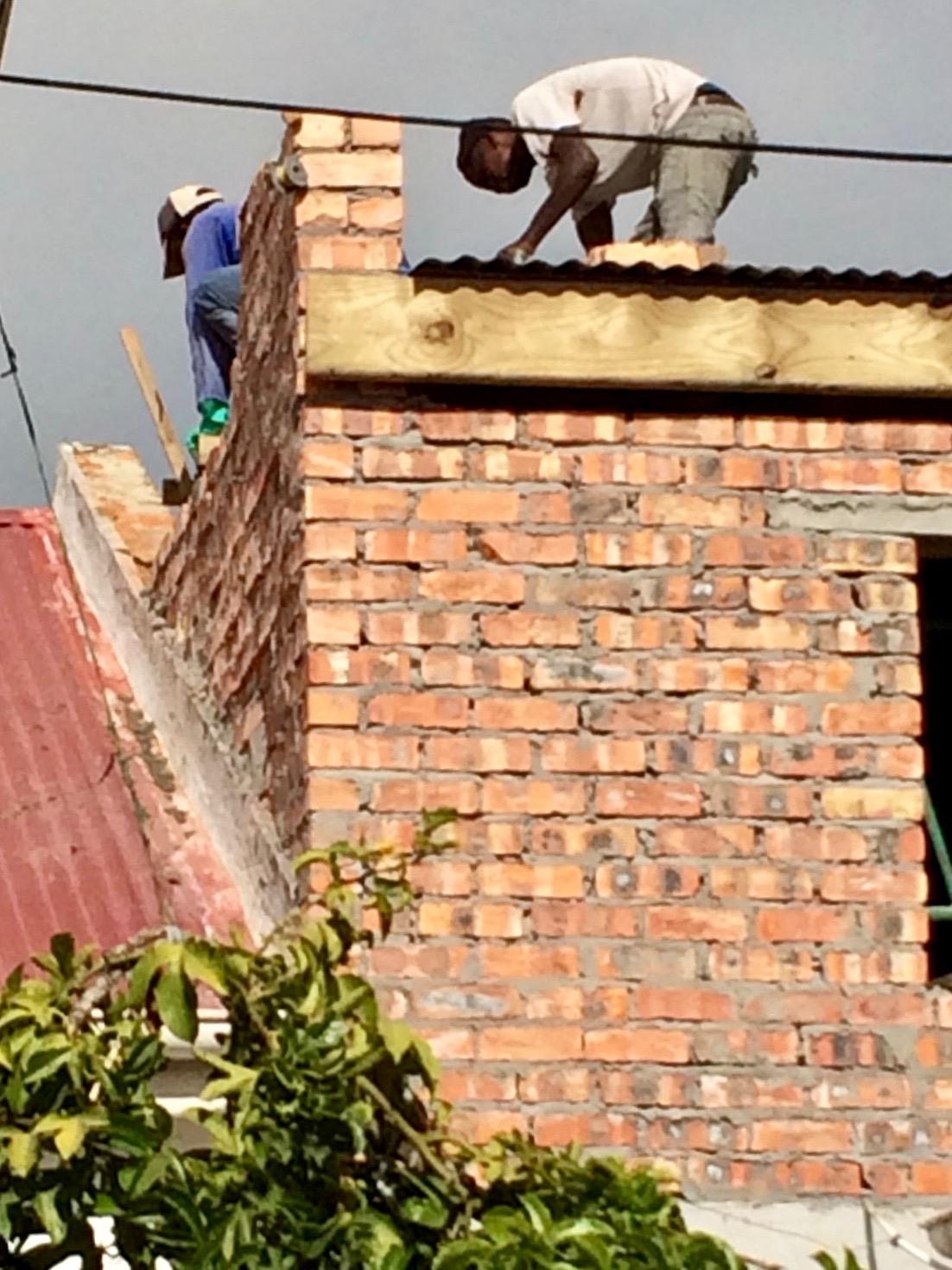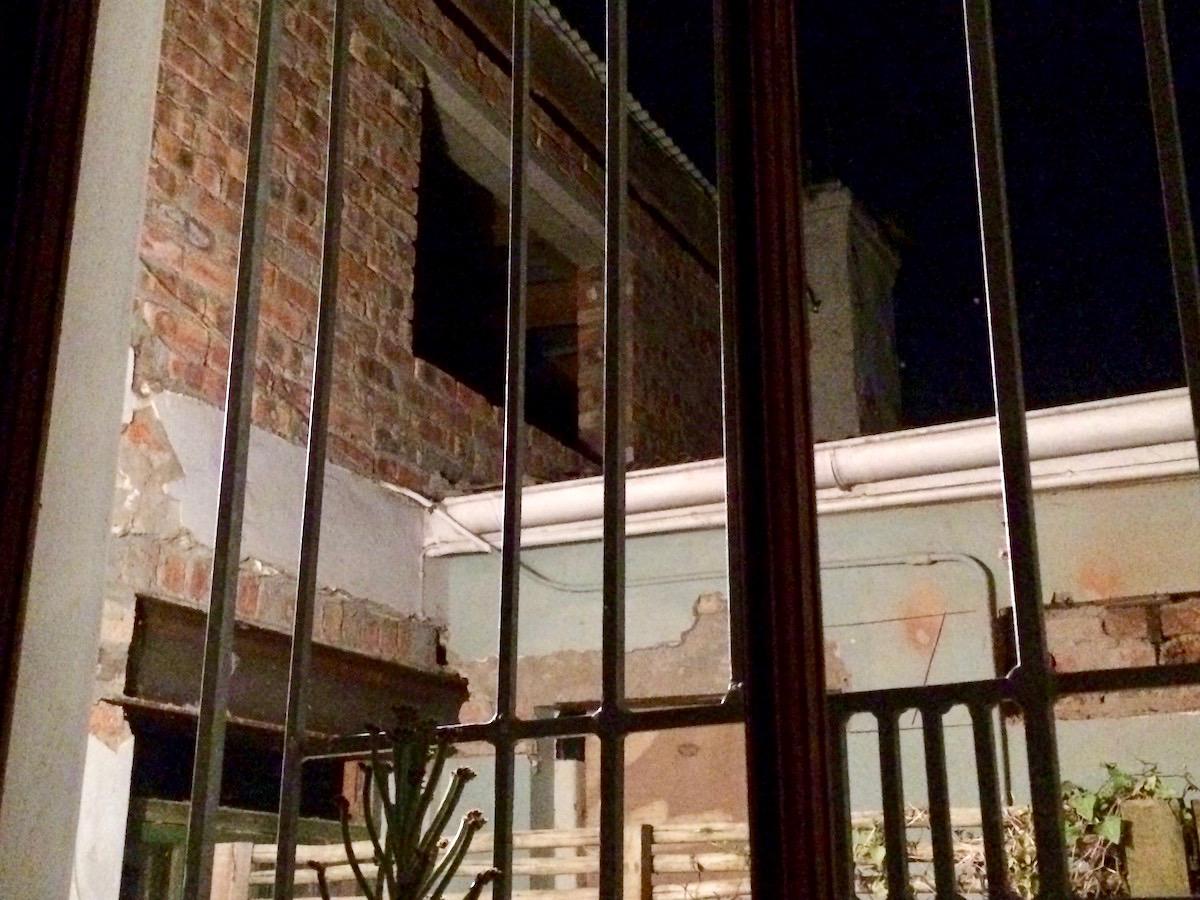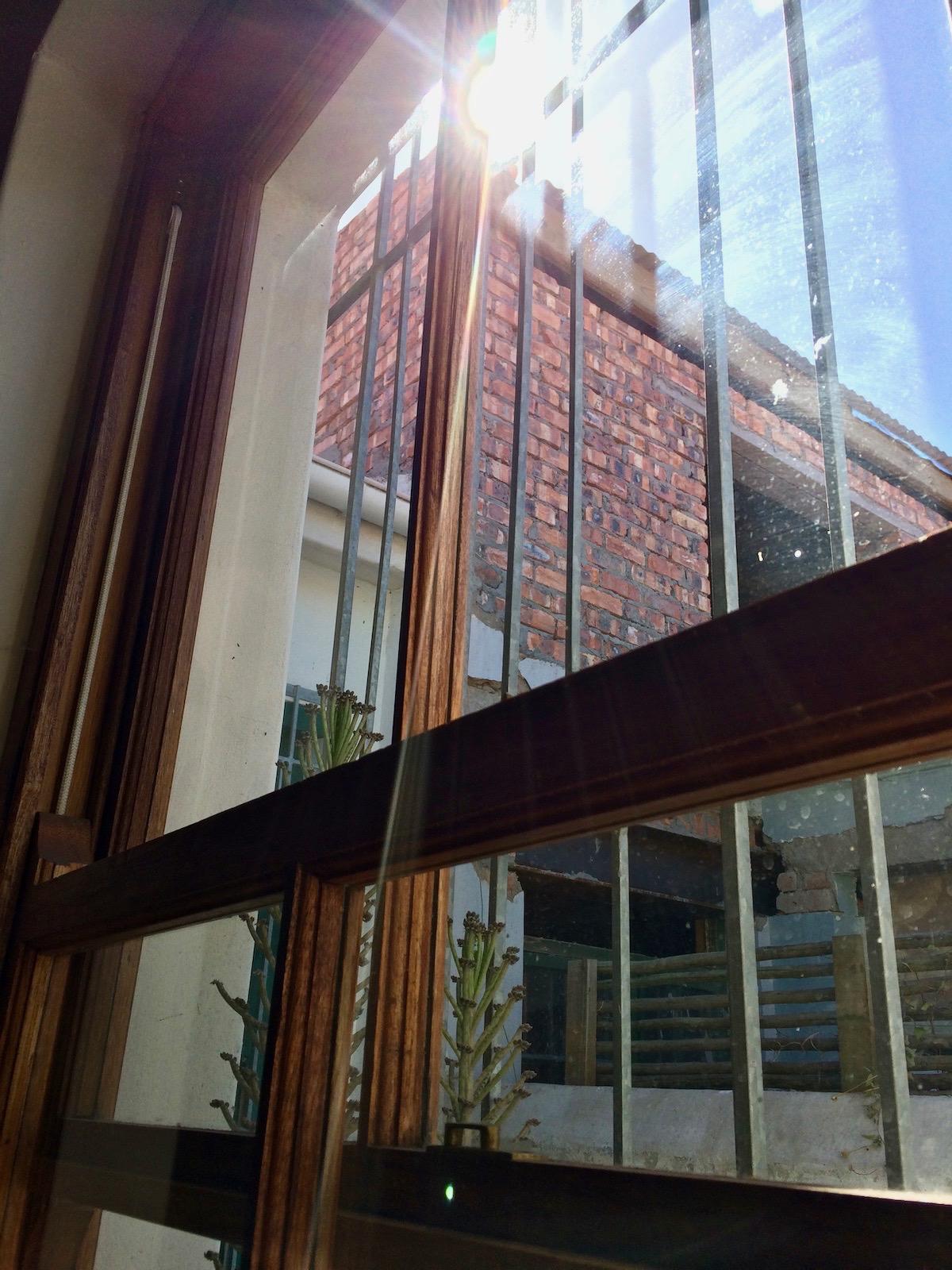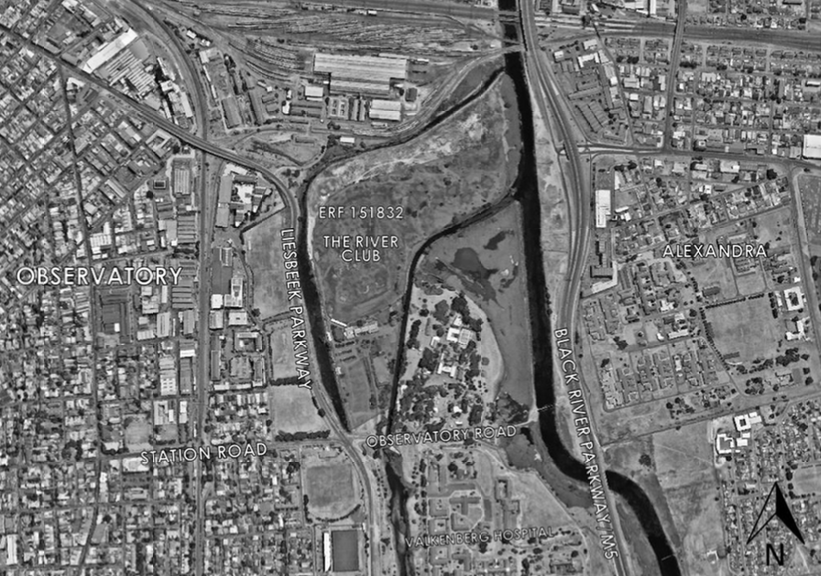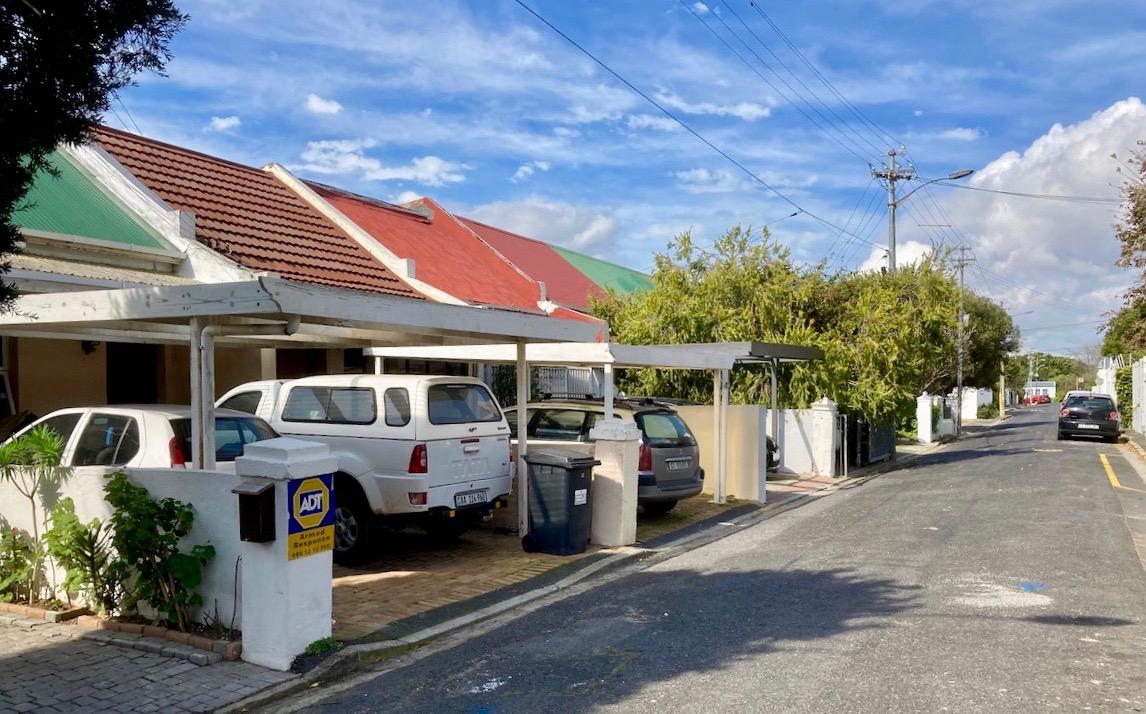
Disclaimer: Any views expressed by individuals and organisations are their own and do not in any way represent the views of The Heritage Portal. If you find any mistakes or historical inaccuracies, please contact the editor.
There is an American saying, “You can’t fight City Hall and win!” There is also an ancient legend of a pipe-smoking pirate named Jan Van Hunks who challenged a sinister stranger to a pipe smoking competition on the slopes of Table Mountain. They smoked for days until the stranger gave in and Van Hunks was still puffing. At this point Van Hunks saw the cloven hooves and realised that his competitor was none other than the Devil himself. The angry devil incinerated Van Hunks and they both disappeared but left their smoke. Thus, the mythical origins of Devil’s Peak and for the tablecloth that appears over Table Mountain when the south-easter blows.
In the 21st century much of the murk blowing around Cape Town is generated by city bureaucracy. The battles that communities and heritage specialists have fought against the City of Cape Town and big developers have been well covered in the past: the BoKaap and the Green Point Common being but two cases in point. The current battle royal over the Two Rivers Park development is also an excellent example of what happens under The Tablecloth. The case I am highlighting is the story of one little person versus an indifferent and collusive municipal officialdom. The “little person” involved is Nodi Murphy, a long-term resident of Duke Street in the historic and colourful suburb of Observatory. In the interests of full disclosure, she is also my sister-in-law.
At one level this is simply a dispute between two neighbours. So why should it be of public importance? The reason is that the dispute reveals the weaknesses in the heritage legislation and the implicit collusion and the manipulation of legal processes within the City of Cape Town bureaucracy. At another level, there is also an underlying legal or constitutional conundrum: spatial development and heritage legislation are at odds with each other, and heritage usually loses out.
It also shows that City Hall can be beaten, albeit at considerable personal, financial, and emotional cost. In this local election year, voters should note that such arrogance is widespread in local politics, regardless of the party in power. The common denominator being the enormous influence that developers can exert on planning and public participation processes, the Two Rivers Park development intended to host Amazon’s All Africa Headquarters being a case in point.
Duke Street is a street of picturesque, terraced cottages that are part of the Observatory Heritage Protection Overlay Zone (HPOZ). It is a stone’s throw from the Liesbeek river and the Two Rivers Park. A HPOZ is an area protected in terms of the City of Cape Town Development Management Scheme. Under the previous municipal dispensation, Observatory was among several areas that were protected as Urban Conservation Areas. In 2015 these areas were redesignated as HPOZs.
In terms of the municipal bylaws, the city is required to approve the following activities in an HPOZ:
a) “any alteration, including any action affecting the structure, appearance or physical properties of a heritage place, whether by way of structural or other works, by painting, plastering or other decoration or any other means;”
b) “any development including any physical intervention, excavation, or action other than those caused by natural forces, which may in any way result in a change to the appearance or physical nature of a heritage place, or influence its stability and future well-being, including –
(i) Construction, alteration, demolition, removal or change of use of a heritage place or structure at a heritage place;
The City of Cape Town does have satisfactory laws in place, it is their implementation that is sadly wanting. These bylaws also exist in the context of problematic national and provincial legislation. Many of these entanglements have their origins, not just in the bureaucratic siloes that President Mbeki once railed against, but in the hasty drafting of the schedules delineating concurrent and exclusive competencies between the spheres of government in the Constitution. Officials who had been involved in the drafting of the constitution once told me that the Schedules were a last-minute piece of work.
Heritage is not directly mentioned in the schedules, it falls under “provincial cultural matters” which are an exclusive provincial legislative competence. This is not listed at all in the matters assigned to local authorities, so heritage (and other cultural matters) is an unfunded mandate for local authorities. This continues to create difficulties as bureaucrats and politicians pass the buck merrily between spheres of government and ignore and side-line public consultation processes. Developers revel in the confusion and are past masters at manipulating a sclerotic system to their financial benefit. I believe that it is a universal law that property developers and local politics go together as closely as flies and horse manure.
While this case is not that of a major development, the way it has unravelled illustrates the problems that heritage activists face when arguing against insensitive developments in other contexts. Let us start at the beginning: in early 2017, Nodi returned home after a New Year holiday, to discover that her adjoining neighbour was in the throes of major building operations, including adding a second storey to his heritage-protected house, instead of a dormer window and a couple of skylights that she had been informed had been approved by Heritage Western Cape (HWC).
The second storey being added (Nodi Murphy)
The workers had damaged the common firewall between the two cottages and bricks had tumbled into Nodi’s attic posing a fire hazard and a safety threat. The builder vaguely said that plans had been approved, but Nodi had heard nothing of this and contacted her local ward councillor, Paddy Chapple, who, after some delay (the first of many on the part of officials of the City of Cape Town), provided her with the name of a municipal building inspector.
This resulted in some action as the building inspector told Nodi that there was no record of an approved plan on the municipal automated system, and he issued a “cease-build” order. He then arrived a day or two later to do a site inspection and advise Nodi that the new upstairs window that now overlooked her bathroom and bedroom, could be approved if she agreed to it being fitted with obscured glass. He seemed unaware, or unconcerned, that the appearance of a protected building in a row of nearly identical heritage buildings was being altered. He was also unconcerned at the hole in the common wall. As London cockneys might ask, tapping the side of their noses, “Was he nobbled?”
Nodi despatched emissaries to the Planning Office to find the plans. And here we enter the murky atmosphere originally puffed up by Satan and Jan Van Hunks. An illegible copy of a plan submitted four or five months earlier, to HWC, not to the city council, surfaced. The plan bore no relation to what had actually been built on the site.
Illegal work on the go (Nodi Murphy)
The City of Cape Town lowered a thick veil of secrecy over the matter. No, Nodi was informed, the application to amend the building plans would not be advertised. Why? Because when the applicant sent in the plan submitted to HWC, he supplied a letter of motivation requesting that any requirement for advertising be waived. Furthermore, based on that letter, it was likely that the plans would be approved and therefore, there was no need to notify neighbours or give them an opportunity to object. When Nodi demanded sight of the letter of motivation she was informed that she was not entitled to see it as it was for internal use and documentation would only be forthcoming after the approval of the plans and the completion of the necessary reports.
However, the furore, plus the fact that HWC, on discovering that the structure under construction differed dramatically from the alterations it had previously approved, revoked its permit in its entirety. This forced the City Council to advise the offending party to resubmit amended plans. On this occasion the plans had to be advertised and several residents lodged their objections. Thereafter, a variety of plans arrived in city planning offices, none even vaguely resembling what has actually been erected. By this time, it had been established that the neighbour was an employee of the City of Cape Town and, furthermore, it was strongly rumoured that he was also related to somebody influential and high up the civic food chain.
The view from Murphy's kitchen (Nodi Murphy)
Nodi traipsed from committee hearing to tribunal hearing, from local to regional panels. Hearings were scheduled at offices in the further corners of the metropolitan area instead of at the offices nearest to Observatory as legally required. Hearings were postponed and frequently she heard of a relevant hearing by accident or at the last minute. On the other hand, the offender was given extended periods of grace to supply amended plans and to correct misleading or erroneous documentation. Throughout the process it appeared that the city employee was being favoured over the resident.
Nodi wrote to the city ombud who decided that as the matter was due to be heard in the municipal court, it was not appropriate to intervene. She wrote to literally dozens of officials, councillors and to the mayor. Each response was basically a bureaucratic, “Tut, tut, there, there, I have asked for a report.” The reports never came, or their contents were never divulged, even after Nodi put in Access to Information requests in terms of the Promotion of Access to Information Act. The municipal court slapped the offender over the wrist and levied modest fines, but still the offending and illegal structure stands, an eyesore in a streetscape of nearly identical heritage cottages.
Another shot of the illegal structure (Nodi Murphy)
The local ward councillor declined to support his constituent and washed his hands of the matter, so Nodi took the matter up politically and wrote to Mmusi Maimane, the then Leader of the DA, and received a sympathetic response that was referred to the Mayor of Cape Town for further non-action. Each official in each sphere of government carefully explained his or her function and why it was not their responsibility to do anything about the matter.
What made matters worse was the intimidation and the apparent collusion between municipal officials and the applicant. When the amended plans were advertised, there were numerous objections from Observatory residents. As a matter of procedure, the applicant was informed of the objections. A bizarre series of events followed. Building inspectors fanned out across Observatory levying fines on residents for their minor and/or historic infringements of regulations that had never previously troubled the city authorities. Perhaps by co-incidence, only those who had lodged objections to the controversial development were fined.
In Nodi’s case, a trio of inspectors inspected her home and found five faults. She was told that she required an engineering report on her patio deck. This cost several thousand rands and Nodi was informed that there was nothing wrong with her deck, but to satisfy the municipality, she should install two angle irons at the outer corners. This was done for a few hundred rands and she informed the building inspectors of her action. Two officials arrived to approve the angle irons, one having the grace to look exceedingly embarrassed. This Kafkaesque incident cogently demonstrates the extent of institutional corruption and collusion hidden in the municipal murk.
After more than two years the matter was no nearer to resolution, although File 13 at the back of the municipal filing cabinet must have become very full. Nodi was forced to dig deep into her retirement savings to engage attorneys and an advocate to take the matter to the Western Cape High Court. The City Council acted on behalf of itself, its officials, and the neighbours. Before the matter was even heard in court, the city’s advocate informed Nodi’s advocate that the city’s actions were indefensible, and the city would not litigate the matter.
After three and a half years since the first brick from the firewall tumbled into Nodi’s attic, a settlement was reached and made an order of court (Case Number 16503/2019 dated 23 November 2020). The city agreed to pay Nodi’s costs and to refer a corrected report and the flawed decisions and misleading documentation back to its tribunals for reconsideration. The city agreed to implement the order within thirty days, subject to the submission of all the correct documentation. More than seven months later the city has not acted, arguing that that it is still awaiting documentation from its officials, the neighbour, and, possibly from Jan Van Hunks and the Devil himself.
This brings us back to the problems with the legislation. HWC did its job in terms of the law and revoked its heritage permit once it was informed that its original decision had been based on inaccurate plans and misleading information. However, no heritage agency in the land has the authority to order the demolition of an illegal structure, that is the responsibility of a municipality. There is a clear disjuncture here because planning legislation is not harmonised with heritage legislation. While the Cape Town bylaws look good on paper they are ignored or not properly enforced. Also because of the lack of enforcement mechanisms in the heritage legislation, municipalities, developers, and builders can ignore heritage requirements and the merits of objections with virtual impunity, unless there is a sufficient and embarrassing public furore to scare politicians.
This has happened in Cape Town in other cases, such as the developments impinging on the BoKaap, and in Green Point on the Atlantic seaboard where none other than struggle icon and retired Constitutional Court Justice Albie Sachs weighed in with the protestors and the city and the developers were forced to back down. The battle over the River Park development continues with big money behind this scheme and HWC has recently proposed to SAHRA (the national heritage authority) that the area be considered as a national heritage site. All this requires mass public action, or high-level influence.
River Club Declaration Area (Provincial Gazette)
Why is the law so imbalanced? The Spatial Planning and Land Use Management Act of 2013, provides but restricted opportunities for public participation and while it establishes Municipal Planning Tribunals, these, and the official appeal body, the Planning Appeals Advisory Panel, are both appointed by municipalities. There is no provision for an appeal to the provincial sphere of government. It is the province that appoints Heritage Western Cape and its sister agencies in the other provinces. So, the city is, in a sense, its own prosecutor, judge and executioner. Once these avenues are blocked, or biased tribunals fail in their duty, victims are forced to take the expensive path of litigation, not only for themselves, but for the ratepayers in general, who must pay up when the city is shown to have failed in its duties.
This demonstrates that our processes of governance are flawed. Governance should be in the interests of the people, but when politicians and bureaucrats fail to provide this, the courts are there to uphold the law. By admitting that it would not litigate, or oppose, Nodi’s affidavits, the City of Cape Town acknowledged it’s gross and persistent misconduct. However, it is dragging its feet on implementing the court order.
This battle, one person versus City Hall, is one of many examples of the length that the heritage community and local residents have to go to in order to force a bureaucracy that is there to serve, to do its job.
To conclude on a broader note, developers, both inside and outside South Africa, greatly prefer to concoct their plans out of the public eye and love the politicians who enable this. In England, Boris Johnson’s government is strongly pro-developers and introduced legislation into the House of Commons restricting public participation and appeal rights in planning matters. This has not yet passed into law, but it has already proved to be so unpopular that it was a major factor in the humiliating defeat that the Conservative Party suffered recently in a by-election in one of its safest seats.
So, the ultimate protector of heritage is democracy itself.
Dr Graham Dominy is a former National Archivist of South Africa and is also an historian and author. He currently serves as a member of the National Heritage Council, but he writes in his personal capacity and these views are not necessarily those of the National Heritage Council.
Comments will load below. If for any reason none appear click here for some troubleshooting tips. If you would like to post a comment and need instructions click here.


